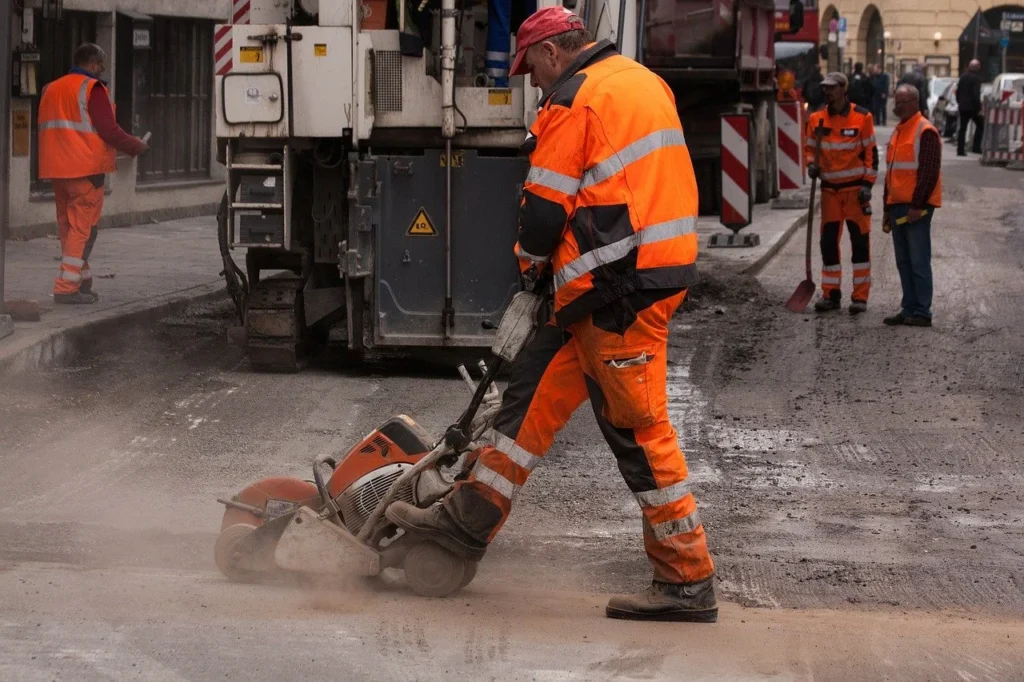The roads are dynamic places, hosting not just vehicular traffic but also workers who play vital roles in construction, maintenance, and other important functions.
To share the road with workers, you must be more aware and practice responsible driving.
This discussion will examine the risks and challenges that they face on the roads, as well as the benefits of drivers cooperating to ensure everyone’s safety.
Challenges of the Workers
1. The Road Worker’s Role: Road taskers perform essential tasks in maintaining, repairing, and upgrading infrastructure. These individuals work nearby to move traffic on a variety of projects, from construction to maintenance. They are responsible for repairing potholes and repaving the road, as well as installing signs, undertaking construction projects, etc., all of which require them to work on or near a roadway.
2. Understand the Risks. Workers who work near moving vehicles face inherent risk due to their proximity. Drivers who fail to be cautious in work zones increase the risk of accidents, injuries, and deaths. Drivers must understand how their driving directly impacts the safety of workers. A momentary lapse can lead to serious consequences.
3. The importance of work zone safety: These are areas that are used for road maintenance and construction. Signs, cones, and barriers are used to warn drivers of the workers’ presence and any changes to road conditions. To minimize risks, drivers must adhere to posted speed limits and follow instructions.
4. Reducing speed limits and increasing vigilance are two of the most important safety measures that can be implemented within work zones. Drivers can react more quickly to unexpected hazards and changing conditions when driving at slower speeds. To avoid road accidents and to protect workers, drivers must adhere to the reduced speed limit and are more vigilant in construction zones.
5. Traffic Control Measures: To guide motorists safely through construction zones, traffic control measures such as flaggers and traffic cones are used. These indicators must be observed by drivers and they should follow instructions. Drivers who ignore traffic control can face fines or legal penalties.
6. Traffic Control Measures: Drivers are required to change their driving positions in work zones due to lane closures or merge points. In work zones, sudden lane changes and merging, as well as aggressive driving, can cause collisions and put workers’ and other motorists’ safety at risk. To navigate these zones safely, patience, courtesy, and adherence to traffic patterns are essential.
7. The dangers for Drivers: who are distracted pose a serious threat to road taskers. Mobile phones, car entertainment systems, or any other distraction can divert a driver’s attention from the road. This makes it easier for drivers to overlook important signs, signals, or nearby workers. To ensure the safety of road workers, drivers must maintain focus and avoid distractions.
8. Adapting To Changing Conditions: Roadwork often results in changing conditions such as uneven surfaces, temporary traffic patterns, and detours. The drivers must adapt quickly to the changes. To prevent accidents, drivers and workers must be attentive to signs, follow the directions of flaggers, and adjust their driving to the current conditions.
9. Safety Gear: Drivers are required to be aware of workers on the road and their gear, including high-visibility clothing and helmets. Drivers must be alert to these workers, their equipment, and the conditions in which they work. This is especially important when there are low light levels. By respecting workers’ visibility requirements, drivers can react safely and keep a safe distance.

10. Legal Consequences for Non-Compliance: Drivers who fail to comply with traffic regulations and laws in work zones may face serious legal penalties. To discourage unsafe driving, many jurisdictions increase penalties in work zones. The penalties can include fine increases, points on your license, or, in extreme cases, a suspension of your license. It is important to understand and respect these legal implications in order to foster a culture that promotes responsible driving among road workers.
Conclusion
Drivers must be committed to their safety when sharing the road with construction workers, maintenance staff, or other drivers. To ensure the safety of workers, drivers must understand the dangers they face on the roads, adhere to traffic rules and speed limits, and avoid distractions. Drivers can create a safe environment by fostering an awareness and culture of responsibility. This includes those workers who are dedicated to maintaining and improving our infrastructure.
